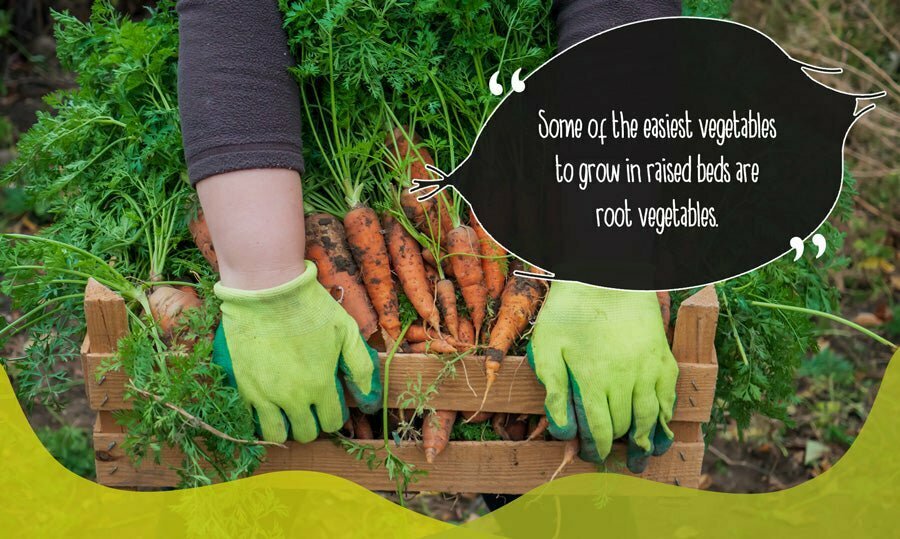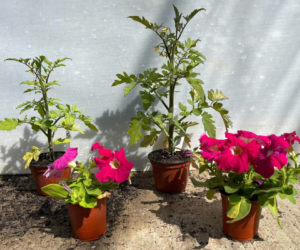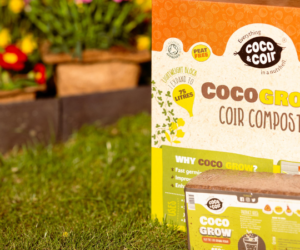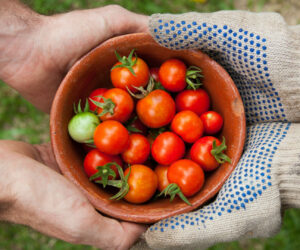The best vegetables to grow in raised beds
Why grow in raised beds?
Raised vegetable beds are easier on gardeners’ backs and knees. You don’t have to bend as far or work on the ground for long periods when cultivating your plants.
What are the advantages of raised beds?
When growing vegetables in raised beds, plants can be grown in separate blocks for each type of vegetable. This keeps competition low. Plants thrive, grow in more uniform shapes, and it becomes easier to suppress weeds.
Allocated bed systems also make monitoring and crop rotation easier than in large patches of garden.
A raised vegetable garden will also benefit from improved drainage. In addition, it provides an opportunity to use a different substrate from that found naturally in your growing space.
You can fill a raised bed with the growing medium that best suits your needs, and tailor both nutrients and drainage to each plant.

How to grow in raised beds
Positioning
Ensure your beds receive plenty of natural sunlight and rainfall, but remain sheltered from severe weather. Beds that run north to south receive more consistent sunlight than those built east to west.
Width
Make beds wide enough for healthy growth, but not so wide that the middle is unreachable. Under 1.5m usually ensures accessibility.
Don’t walk or lean heavily on the soil
This will compress it, negatively impacting healthy root growth and drainage.
Enrich the soil
Use a fertiliser or organic compost to maximise yield and promote healthy root growth.
Plan how to access the beds
If planting more than one bed or using limited space, leave enough room for tools, wheelbarrows, and yourself.
Improving drainage
If clay soil or hard standing are sited beneath a bed, lay rocks and stones at the bottom to help roots and add more drainage holes.

Raised beds for vegetables
Almost all vegetables benefit from the improved drainage offered by raised bed gardening.
Leeks seem better suited for open ground growing. They have shallow root systems but can be grown in raised beds when given enough sunlight and watered frequently.
Underground vegetables
Some of the easiest vegetables to grow in raised beds are root vegetables such as carrots, parsnips, and radishes, as well as onions and potatoes.
For edible roots, bulbs and tubers, aerated soil that helps prevent rot is vital.
Beetroot grows half submerged, preferring cooler soil. It fares better when buried deeper in warmer months, and kept in shaded areas of raised beds.
Leafy vegetables
Vegetables that grow above ground also benefit from the strengthening of roots that occurs within the soil of a raised vegetable garden. Among them are cabbage, cauliflower, kale, and spinach.
Fragrant herbs like thyme, basil, dill and garlic thrive in raised beds, while helping to repel insects from above-ground leaves.
Cucumbers can be grown vertically on strong trellises to save their sprawling vines from dominating space. Vertical growing can be utilised for runner beans and tomatoes too, where raised beds offer aerated, nutrient-rich soil.

Improving aeration and drainage with coco coir
Coco coir is an optimal growing medium to fill raised beds with. Naturally sterile, it doesn’t attract pests, helps to suppress weeds, and contains no pre-existing contaminants.
For areas with high rainfall, coco coir with added perlite increases porosity and aeration.
Highly water-retentive, coco peat also absorbs and retains added nutrients, ensuring less waste.
Alternatively, coco peat with added nutrients provides everything necessary for maximum yield and strong root growth.
Raised beds will require more watering during drought or hot weather. However, coco coir can reduce water loss, even in hot temperatures.
Using a layer of coco chip mulch will further insulate the soil from direct sunlight, and will also act as a frost barrier in cold weather.














